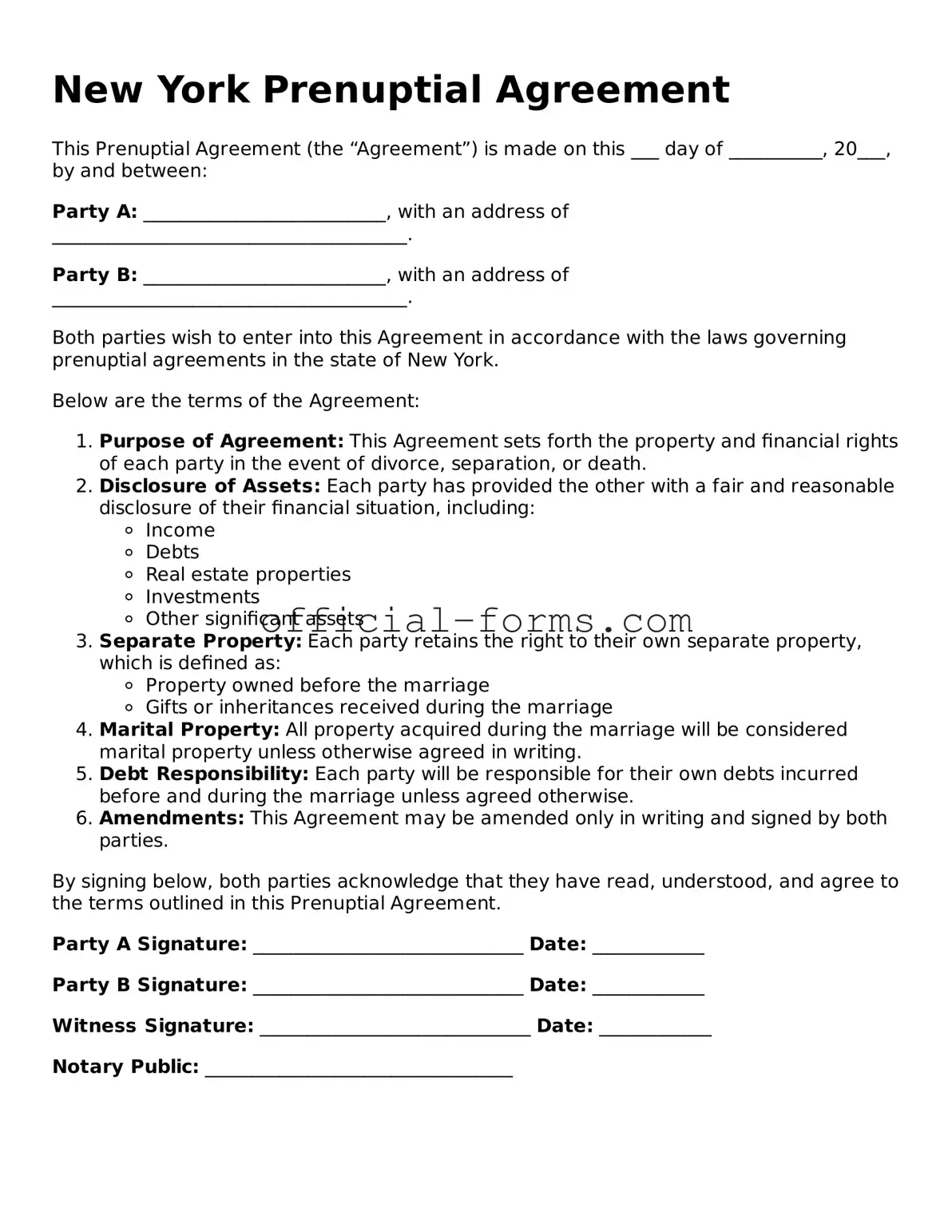Entering into a marriage is a significant milestone, often filled with love and hope for the future. However, it is also a time when individuals may wish to consider the practical aspects of their union, particularly regarding financial matters. A New York prenuptial agreement serves as a legal document that outlines the distribution of assets and responsibilities should the marriage end in divorce or separation. This form addresses key elements such as property ownership, debt responsibilities, and spousal support, allowing couples to establish clear expectations and protect their interests. By discussing these sensitive topics before tying the knot, partners can foster open communication and mutual understanding, which can strengthen their relationship. The New York prenuptial agreement form requires careful consideration and must comply with specific legal standards to be enforceable, ensuring that both parties are treated fairly and equitably. Ultimately, this agreement can provide peace of mind, allowing couples to focus on building their life together while knowing that they have a plan in place for unforeseen circumstances.
